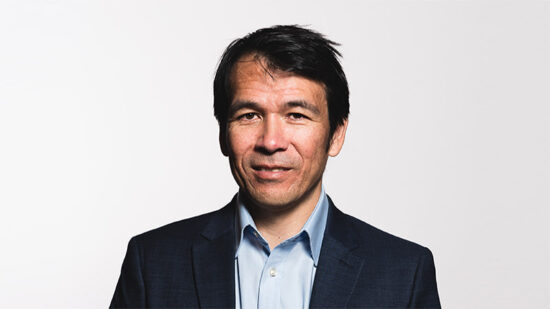Bitcoin was largely viewed from two different perspectives when it launched about 14 years ago. The engineering angle focused on the blockchain technology that underpinned the fledgling cryptocurrency, and the consumer generally viewed it as a fully democratised, futuristic currency capable of enabling a positive change to a world struggling post-financial crisis, writes Russell Andrews, global head of advice solutions, SEI, Asset Management Distribution.
Since then, Bitcoin has seen a number of key milestones, including it’s first-ever transaction to buy a pizza in May 2010, surpassing a valuation of $1 per coin, and reaching its peak valuation of over $65,000 (£52,787, €59,873) in November 2021.
Despite having lost more than two-thirds of its peak value since, Bitcoin remains the pre-eminent “coin” today. Yet during recent years, we have also seen a raft of competing cryptocurrencies across a range of blockchains.
The impact goes well beyond the idea of a digital currency and has spawned an entirely new industry known as “digital assets”. Digital assets refer to anything that can be “minted” and exchanged on a blockchain, while a blockchain is a technology platform generating a distributed database or ledger designed to record each asset and its ownership.
Digital assets come in a number of forms, including crypto assets like Bitcoin; stablecoins that are still digital but linked to flat currencies or commodities such as the US dollar or gold; non-fungible tokens (NFTs) that are cryptographic assets on a blockchain with a unique certificate representing ownership of a digital item such as a meme or digital art; and security tokens that are tokenised stocks or bonds.
What’s the appeal?
As we start 2023, digital assets have gradually taken on a different perspective through the lens of both a consumer and professional investors. Blockchain technology’s huge potential remains relevant and high on the list of engineering and product development teams across the globe and industries.
However, how the actual digital assets themselves are now being positioned as genuine investment options is one of the key developments in recent years. Cryptocurrency has been known to surge in value by more than 1,000 percent in a single year.
In the current low-return environment, these potentially high octane returns massively appeal to those who have lofty financial ambitions and are happily willing to take on more risk.
Digital assets can theoretically provide investors with uncorrelated portfolio diversification when coupled with traditional assets such as stocks or bonds. And they are viewed by many as a cool, fun, and modern way of investing, which for the newest generation of investors appears to be an important aspect.
Do digital assets have a role in an advised portfolio?
Digital assets as speculative, and astronomical gains are hardly guaranteed for any type of investment—but even less so for digital assets.
While the return potential of traditional assets, such as stocks, bonds, and real estate, can be evaluated based on the fundamental strength of an underlying business (looking at its forecasted earnings and asset levels), crypto assets have no such underlying businesses to evaluate; their return potential is anyone’s guess.
While these traditional investments may not be known to deliver quadruple-digit gains in a year, their return projections are typically grounded in relatively reasonable projections.
Yet, context is key. Financial advisers can’t afford to dismiss digital assets. As they continue to increase in popularity, clients will inevitably start to ask questions about their inclusion in their portfolios. Just saying “no” and having little or no knowledge of the asset class is likely to create unwanted friction with clients, especially as wealth moves between generations.
Equally, they shouldn’t be included in client portfolios in order to tell a good story and simply satisfy a client’s itch. Acting as an expert advocate for clients is a major driver in delivering valuable professional advice. This includes ensuring that everything proposed is ultimately in a client’s best interest from an opportunity and risk perspective, and the investment portfolio is a critical component of that advocacy. To offer such expertise means you need to understand markets, asset classes and associated risks, and/or partner with professional investment firms who do have that expertise and can provide support through the process.
Digital assets are different when compared to traditional assets, as they are still relatively immature and don’t carry the same intrinsic fundamental underpinnings, making their tangible and justifiable value difficult to determine. They remain highly speculative instruments with a genuine risk of losing their entire value, making them a potentially unsuitable investment choice for pursuing important financial life goals or too big of a proposition for the total portfolio value.
Unlike most traditional assets, digital assets remain largely unregulated, which can further enhance risk to investors. There is some talk of the regulation of digital assets, perhaps providing another reason to act with extreme caution regarding their inclusion in a client’s portfolio.
What we believe you should do next
Education: As with any area of advice, it’s highly unwise to recommend something you don’t understand. Education about digital assets, their potential benefits, and crucially, their risks is an important starting point. This should also include discussing the subject with your chosen strategic asset management partners to leverage their expertise in determining how best to incorporate such assets into a total portfolio—if appropriate, of course.
Communication: Talk to clients—or even prospects—about their own opinions and expectations around digital assets, ensuring to include a good cross-section of demographics to gain a real perspective of personalised needs.
As part of that process, passing on personal knowledge on the subject to adds value to the relationship while also avoiding any future misalignment of interpretation.
Planning: Because digital assets are speculative, an investor with the means to fund a speculative sleeve in their portfolios should do so with the full understanding of the investments they put in that sleeve—digital or otherwise. If there’s a willingness to accept the risk of a complete loss, designating a speculative bucket may satisfy an investor’s desire to test out new investments, dream big, and take a chance on the digital equivalent of a lottery ticket. Digital assets won’t be going away anytime soon, and demand for them is likely to accelerate quickly with the great wealth transfer. Doing nothing isn’t an option for anyone hoping to be successful, and those with specialist knowledge might actually create a differentiated and attractive proposition.
This article was written for International Adviser by Russell Andrews, global head of advice Solutions, SEI, Asset Management Distribution.








